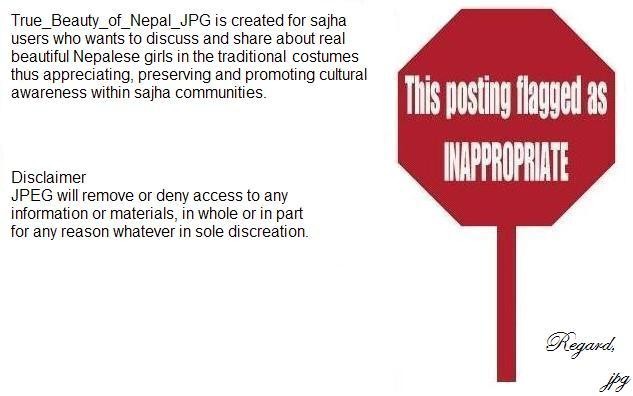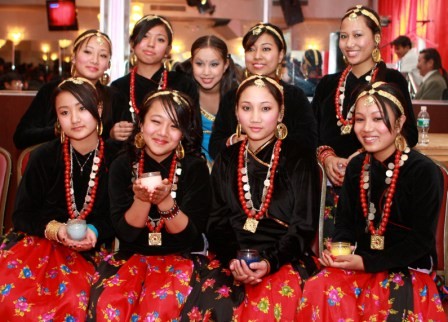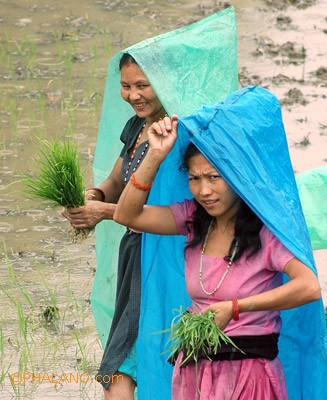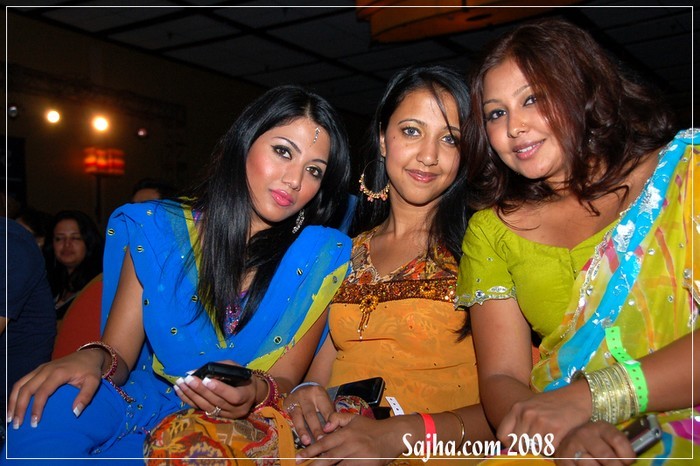|
[VIEWED 407921
TIMES]
|
SAVE! for ease of future access.
|
|
|
|
|
|
JPEG

Please log in to subscribe to JPEG's postings.
Posted on 04-18-09 9:46
AM
Reply
[Subscribe]
|
Login in to Rate this Post:
1  ?
?  Liked by
Liked by
|
| |
Last edited: 11-Jun-09 09:12 AM

|
| |
|
|
|
|
i_my

Please log in to subscribe to i_my's postings.
Posted on 05-11-09 9:14
PM
Reply
[Subscribe]
|
Login in to Rate this Post:
0  ?
? 
|
| |
this thread always cracks me up lol. good going though.
|
| |
|
|
KAledai

Please log in to subscribe to KAledai's postings.
Posted on 05-12-09 8:40
AM
Reply
[Subscribe]
|
Login in to Rate this Post:
0  ?
? 
|
| |
One more

|
| |
|
|
KAledai

Please log in to subscribe to KAledai's postings.
Posted on 05-12-09 8:55
AM
Reply
[Subscribe]
|
Login in to Rate this Post:
0  ?
? 
|
| |
माथिको फोटो गुरुंगनी अनी यो ब्यूटीफुल pic ....

|
| |
|
|
syanjali

Please log in to subscribe to syanjali's postings.
Posted on 05-12-09 10:07
AM
Reply
[Subscribe]
|
Login in to Rate this Post:
0  ?
? 
|
| |
Keladai: Beautiful, but she is not a rural dweller, revealed by her make up????? How ever she is beautiful. Thanks a lot.
|
| |
|
|
JPEG

Please log in to subscribe to JPEG's postings.
Posted on 05-13-09 12:08
PM
Reply
[Subscribe]
|
Login in to Rate this Post:
0  ?
? 
|
| |
Kirat Nis_JPG ~ Ladies from various community coming together to thanks mother Goddess Chandika(Durga) in a form of Chandi dance.
A collection of manuscripts from the 18th and 19th centuries, till now unpublished and unstudied by historians, have made possible regarding history of early Nepal and Kirat people. These historical sources are among those collected by Brian Houghton Hodgson – a British diplomat and self-trained Orientalist appointed to the
Kathmandu court during the second quarter of the 19th century – and his principal research aide,the Newar
scholar Khardar Jitmohan.
This manuscripts has now been complied in the "The History of the Kirat People" (2003)
The evidence so far collected by the scholars have proven that Kirats ruled Nepal two times previous to any other rulers. However, the subsequent rulers and their administrations destroyed many records of Kirat history, religious books called Mundum and its original scripts during Rana government which the office used to call Jatiya nasta bivag {Gopal Gurung}.The subsequent rulers divided Kirats into multiple subgroups in order to weaken their strength in Nepal.
The historical fact shows that Kirats ruled twice in central Nepal. Before Gopal Banshi, the first Kirat king Banashur was the King in the central Nepal which is not mentioned in the current history of Nepal that needs to be explored further. Kirat came in power again when Kirat King Yalamba from the east defeated Gopal bansi and ruled central Nepal once again. The brave King Yalamba united his kingdom from Trishuli in west to Tista, Bhutan in the east, Snow line (Himalaya ) in the north and Chitlang in the south and he shifted the capital from “Yalung†to “Thankot†very close to current capital. “Yala†is the old name of Patan named after the Kirat king “Yalambaâ€, which was blessed with beautiful arts and cultures. His successor, his son Palamba’s title was “Kiratishur†who built a town close to Thankot, presumably later became the current “Kirtipurâ€(mutated form of “Kiratishurâ€).
The sixth Kirat King was Humati Hang when Arjun in Mahabharat visited Nepal where he learnt special fighting skill “Pashupatashra†from Kirat feudal chief. Kirat King Kuber gave him instructions and explained the meaning of civilized people (Devata) as Kirats were very proud themselves calling civilized people or devas. Lord Budha visited central Nepal during the reign of Kirat King Jitedashi. Under Jitedashi rule, Buddhism flourished. Budha preached in Nepal valley and was able to make 1350 disciples including Sariphutta, Ananda etc. King Ashoka ( India ) visited Nepal during the period of 269-265 BC when Kirat King Stungko was ruling the central Nepal. Ashoka constructed Budha stupa in Patan and Buddhist monument in Lumbini. During the course of time different Kirat communities adopted different religion such as Hindu and Buddhism while some continued as being Kirat Mundum followers.
Points to be taken: The most humiliating and demeaning name given to Kirats in the southern parts of Himalayan range (Gangetic plain and its viscinities) as expressed in Hindu mythology), was "Rakshyasha", who were bravely fighting against the Indo-Aryan invasion, for the protection of their lands and self existence (Rakshya + Yasha = Rakshyasha). They started calling them "Rakshyasha" exaggerating with fantasy and portraiting them as the most most cruel people in the world is proven here from the Mabhaarata text is one example.
Yakkha belongs to Kirat family.
It is claimed that the ethnonym "Yakkha" as per the conqueror Aryan's Sanskrit grammar had been spelled in the Aryan-Hindu mythologies as "Yaksa-sh"
And the territory of Yakshas(Yakkha) is mentioned as the region surrounding the Kailasa mountains and Manasa lake (Tibet) in the Himalayas.
In Section 3:152 describes Pandava Bhima's expedition to this territory:-
"Bhima saw in the vicinity of the Kailasa cliff, that beautiful lotus lake surrounded by lovely woods, and guarded by the Rakshasas." referring to the Kiratas, Cinas, Sakas, Nagas, Sabara, Yavanas who were all fighting against the Indo-Aryan invasion.

|
| |
|
|
JPEG

Please log in to subscribe to JPEG's postings.
Posted on 05-13-09 6:43
PM
Reply
[Subscribe]
|
Login in to Rate this Post:
0  ?
? 
|
| |
Miss Beautiful look at my fingers.

|
| |
|
|
JPEG

Please log in to subscribe to JPEG's postings.
Posted on 05-14-09 12:07
PM
Reply
[Subscribe]
|
Login in to Rate this Post:
0  ?
? 
|
| |
A glimpse of the Kirat ni Beauty at ‘Sakela Sili Ubhauli 2066’ ~ a Kirat cultural festival held in Kathmandu, Wednesday, May 13 09. According to Yele sambat, Kiranti new year, Sakela Ubhauli as of 2066 is 5069. Sakela festival is celebrated twice a year by the Kirat community distinguished by two names Ubhauli and Udhauli. Sakela Ubhauli is celebrated on April/May during Baisakh Purnima (full moon day in the month of Baishak) and Sakela Udhauli is celebrated on November/December during Mangshire Purnima (full moon day in the month of Mangshir). According to Kirat holy book Mundhum a year is divided in to two phases: Ubhauli (Going up) and Udhauli (Going down). It is accepted that naming came from the migration pattern of birds. During the start of summer season in Baishak (April/May), the birds migrate upwards to the cooler Hilly region, and thus it is known as Ubhauli, which means Upwards. Likewise, during the winter season in Mangshir (November/December), the birds migrate downward to the warmer Terrain belt, and thus it is known as Udhauli which means Downwards. During April/May, rain starts and the earth gets virginity and fertility. Kirat people worship the earth in a belief that she would become happy and cropping would be envisaged. The celebration of Sakela Ubhauli is the prayer to Goddess of Nature for good crops and protection from natural calamities, as it is the time of farming. Hence the sakela is also known as Bhumi Puja (land/nature worhsipping). Similarly, the celebration of Sakela Udhauli is the way of thanks giving to Goddess of nature for providing the good crops, as it is the time for harvesting All Kirat - Limbu, Rai, Yakkha and Sunuwar, celebrate this festival in different ways and have different names for it. Limbu call it "Chasok Tangnam", Rai call it "Sakela", Yakkha call it "Chasuwa" and Sunuwar called it "Pholsadar". The Sakela also called Sakewa, Sakhewa, Sakenwa, Sime, Bhume, Folsyandar, Ubhouli, Udhouli, depending on the distribution of Kirat people scattered across the Himalayan region from Himachal Pradesh, Nepal, Dareeeling, Assam. Hence the sakela is not only the festival of the Kirat people but also of all the people living in hilly regions who worship Mother Nature in their day to day life. The festival started with Shakti Puja performed by the nakchhong (kirat priest). Points to be taken: This festival, once banned by one of the Malla kings, was again officially recognized by the government as the Kirat’s festival in 2058. It is gaining popularity among young generation

|
| |
|
|
JPEG

Please log in to subscribe to JPEG's postings.
Posted on 05-14-09 2:07
PM
Reply
[Subscribe]
|
Login in to Rate this Post:
0  ?
? 
|
| |
Kirat Nis Beauty getting ready for Sakela sili naach which is also known as Chandi naach. From my study of Kirat people, the celebration of Sakela is connected to many myths. According to the Kirat Mythology, it is said that before the marriage of god Paruhang and goddess Sumnima, Paruhang used to live in the heaven. One day, he saw beautiful Sumnima on the earth and fell in love. He made a beautiful comb, sent it to Sumnima who wished wed him. Four children were born of them after marriage. But Paruhang left Sumnima in a hut on the bank of Dudhkoshi River and did not return for long time. One day, she saw a creeper on a stone while she was in search of food for her children. She tasted the creeper and it was full of power and happiness. She brought the creeper and made Buti, an intoxicating religious garland, and kept it safe. The Buti inspired everybody who saw it to tell the truth of her/his life. Paruhang returned suddenly. He tried to counsel angry Sumnima. She gave the Buti to Paruhang. This immediately made him glad and he started to tell what he had done. He had spent the time looking at the heaven and the earth from the top of Chomolongma (Mt. Everest ). He also said her that he had meditated, and visited the whole universe. Paruhang promised not to leave her, which made Sumnima dance with joy. It is believed the dance is the 'Sakela dance'. For this reason, tradition is also that young boys and girls comes to participate this dancing festival to meet each other and find their love. The Sakela dance has become very popular in the cities of Nepal particularly among the young generation. The people i talk to told me that new generations are also celebrating this festival outside Nepal, specially in Sikkim, Hong Kong, United Kingdom and United States. Points to be taken:. The traditional Kirati religion, apparently predating Hinduism and Buddhism, is based on ancestor-worship and the placation of ancestor spirits through elaborate rituals governed by rules called Mundum. Paruhang and Sumnima are worshiped as primordial parents. Sikatakhu Budo, Walmo Budi, and Jalpa Devi, among others, serve as Kirati deities. There has been quite a controversial of Paruhang-Sumnima being Siva-Parbati after the coming of Vedic Hinduism.
Last edited: 14-May-09 06:02 PM

|
| |
|
|
JPEG

Please log in to subscribe to JPEG's postings.
Posted on 05-14-09 9:08
PM
Reply
[Subscribe]
|
Login in to Rate this Post:
0  ?
? 
|
| |
Maichang hoi maichang Damphu le aaja k bhancha

|
| |
|
|
JPEG

Please log in to subscribe to JPEG's postings.
Posted on 05-15-09 10:15
AM
Reply
[Subscribe]
|
Login in to Rate this Post:
0  ?
? 
|
| |
Another JPG of Tamang Nis Beauty. The Tamang (also known as Murmi) are one of the several ethnic groups living in Nepal and the Himalayan region of India descended from Tibeto-Burman origins. Tamang language belongs to the Tibeto-Burman or Kirat group of the Himalayan region, and has a close affinity with the Gurung or Tamu, Thakali, Magar and Yolmo or Kagatey Tamang languages. Buddhism is their main religion and their script originates from Tibetan. Tamangs are mainly found in the districts of Rasuwa, Sindhupalchok, Kavrepalanchok, Makwanpur, Nuwakot, Dhading, Ramechhap, Dolkha and Sindhuli. The Tamang language, culture and traditions are rich. They were already described as a powerful nation in historic inscriptions going as far back as the 3rd century, attesting to their ancient civilization. The word Tamang has been found to be used in a document of the thirteenth century. That document found by David Jackson (2976:53) mentions that King Bumlde Mgon built the Shrin fortress in Mustang to suppress the ethnic group Tamang of Lower Glo (Mustang). Although the word Tamang was used as early as the thirteenth century to denote an ethnic group, following the expansion of the Gorkhali kingdom the use of the word was prohibited. The Tamang were addressed in a derogatory manner as ‘Bhote' and ‘Murmi'. The Tamangs have, however, continued to call themselves Tamang. The archives of Tamang religious scriptures are rich, varied and vast. They celebrate with equal fervor such diverse religious occasions as Lhosar, Maghe Sankranti, Baisakh Purnima and Shravan Purnima. Their dance culture is equally rich and varied. There are more than 70 subgroups (thar and sahathar) within the Tamang, and inter-marriage does not occur within the same subgroup (thar as well as sahathar). The word Tamang may be derived from the Tibetan words "ta" and "mang", meaning horse and soldier respectively. The name Tamang, normally it is "Tamag" in Tibetan, means horse warriors, Tamags were border police sent by king Trisong of Tibet around 755. Points to taken: Kirat Itihas mentions in "The History of the Kirat People" that the Tamang tribe of Nepal was brought to Kathmandu Valley by King Srong-sen Gampo of Tibet in the 7th century AD as a cavalry division. Their own tradition also says that their original habitat was in Southern Tibet in a place called Uichang. Tamang officers made Central Nepal their permanent settlement and settled around the Kathmandu valley and renamed villages after their names. Their villages were respectively called Moktan kipat, Bal kipat, Bomzan kipat, Ghising kipat, Pakhrin kipat, Yonzon kipat, Syangdan kipat, Thing kipat, Goley kipat, Giaba kipat, Mikchan kipat and Bozu kipat in the Chatara and Dhading districts. They ruled these villages till the Gurkha invasion in the west. Their kipat lands were annexed to the Gorkha Kingdom during the reign of King Prithvi Narayan Shah in 1768 AD.

|
| |
|
|
JPEG

Please log in to subscribe to JPEG's postings.
Posted on 05-15-09 8:55
PM
Reply
[Subscribe]
|
Login in to Rate this Post:
0  ?
? 
|
| |
The choice is yours. Chitko sari vs Makhmali Choli lai

|
| |
|
|
JPEG

Please log in to subscribe to JPEG's postings.
Posted on 05-16-09 10:15
AM
Reply
[Subscribe]
|
Login in to Rate this Post:
0  ?
? 
|
| |
Look@ Me & Not the Food! Sherpa ni beautie JPG. Trust me JPG did not click this JPG

|
| |
|
|
JPEG

Please log in to subscribe to JPEG's postings.
Posted on 05-16-09 5:26
PM
Reply
[Subscribe]
|
Login in to Rate this Post:
0  ?
? 
|
| |
Smiling Lepcha ni beauty :-) The Lepcha (also known as the Rong, Rongke, or Rongpa). They are the aboriginal inhabitants of present day Sikkim. Many Lepcha are also found in western and southwestern Bhutan, Tibet, Darjeeling and the Ilam District of eastern Nepal. The ancient Lepchas are believed to have originated from the foothills of Mount Kanchanjunga, which they revere as their deity. They have their own script, and their holy scripture is called Astachyo. In Lepcha society, alcohol is considered "clean". There is no animosity and caste system among the Lepchas. The dead are taken out through the broken wall of the house and are buried. The Lepcha social council is called Rong Senungthi. According to their mythology, a place called Mayal Lyang near Mt Kanchanjungha is their original abode. Besides Ilam, they are found in small numbers in Dhankuta in Nepal. Outside Nepal, this tribe is found in Sikkim and in Darjeeling of West Bengal. The census of 2001 records their population at 3,660(NEFIN) and hence they are put in an Endangered Group. The ancient religion of Lepchas (Lapchas) is called ‘Munlom', almighty god is called ‘Takbo Thingum', the master of wicked souls is called ‘Chhyugemung Pano' and shamans are called ‘Bungthinglom' (Chemjong, BS2026). Nowadays Lepchas are seen accepting all three religions, ie Buddhism, worshiping of nature and Dhami-jhankribad (shamanism). They are widely influenced by Dhamis and Jhankris besides Lamas. Their dhami is called ‘Mun Mun'. The better group of Mun Mun is called Tang-Li Mun and the worse group is call Mun-Mook Mun in accordance with these beliefs. In addition to these, Padem or Bonthing, Yaba (female Yama) is believed to have come from Limbus and Pau from Sikkimese Bhotes (Gorer, ibid: 215-216). They are considered to be rich in folklore. Emergence of Lepcha: According to the "The History of the Kirat People" that was published in 2003, The Rong or Lapcha Kirat people originated from three sources. The first group who claimed its origin from the west or Elam of Southern Persia to Eastern Nepal was called the Elammu or Elamite family. Arammu were residents of Aram land, or Syria. The second group of Khamba Lapchas, migrated from Kham of Eastern Tibet or Suchuwang province of China. The third group, Rong Lapchas who belonged to Nam Maw and Tai Tembe, Nam Gam Tembe of Mokwan locality of Unan province of Southern China, had entered Nepal via North Burma with their leader Mung Maw Rong. All three groups settled and intermingled in East Nepal and claimed themselves to be Rong or Mutan Chi Rong- a distorted version of Mung Tai Chi Rong. The term Lapcha was coined by their close neighbors the Bahing Rai tribe of Khombuwan for their residence was situated in the eastern corner of Kirat land of modern Nepal. Based on this some anthropologists suggest they emigrated directly from Tibet to the north,or said to be migrated from Eastern Mongolia. while others suggest a more complex migration that started in southeast Tibet, migrated to either Thailand, Burma or Japan, then navigated the Ayeyarwady River and Chindwin rivers, crossed the mighty Patkoi range coming back west, and finally entered into ancient India. While migrating westward through India they are surmised to have passed through southern Bhutan before reaching their final destination near Kanchenjunga. The folklore of the Lepcha or the Rong people do mentions that they are the descendant of Limbu people.

|
| |
|
|
JPEG

Please log in to subscribe to JPEG's postings.
Posted on 05-16-09 9:51
PM
Reply
[Subscribe]
|
Login in to Rate this Post:
0  ?
? 
|
| |
This is Nepali Rani. Truly beauty of Nepal. From, jpg

|
| |
|
|
JPEG

Please log in to subscribe to JPEG's postings.
Posted on 05-17-09 7:31
AM
Reply
[Subscribe]
|
Login in to Rate this Post:
0  ?
? 
|
| |
Contemplating Beauty

|
| |
|
|
JPEG

Please log in to subscribe to JPEG's postings.
Posted on 05-17-09 12:13
PM
Reply
[Subscribe]
|
Login in to Rate this Post:
0  ?
? 
|
| |
Not 1 but 6 Thakali nis beauty. The emergence of name Thakali is relatively new. According to the study of this group, the name Thakali start to appear in the beginning of the twelfth century. It is no doubt that Thakali migrated from the Tibetan plateau along with Lepcha, Sherpas, Tamang, Yolmo people. The History of the Kirat People states that the origin of the Kirat viz Tibeto-Burmese people can be traced back in combination of three races. According to the Kirat Mundhum or tradition, three races are known by the names of Khambongbas or the Khambos, the Tangsangthas or the Mongols and the Munaphens or the Chinese. The Khambongbas or the Khambos were the first immigrants to this Himalayan region. The Tangsangthas or the Mongols and the Munaphens or the Chinese people came in later periods and intermingled with the Khambos and constituted a big human race. They spread from this Himalayan region to India, Burma, Syam, Vietnam, Malaya and Philippine islands, established their kingdoms and kept their respective records of history. The scholar H.C. Ray Chowdhary(The Political History of Ancient India) agreed. "In India, Kirat people occupied the regions from Himachal Pradesh to Assam in the north and from Manipur to Chittangong in south-east." His work can be found in the kirat people history. Hence the origin of the Thakalis is Munaphens(china viz tibet) The stronghold of the Thakalis is Thak Khola in Mustang District. They have their own language, which belongs to the Tibeto-Burman family, and is similar to Gurung (Tamu) and Tamang languages. Thakalis have four major clans - Chhyoki (Gauchan), Salki (Tulachan), Dhimchen (Sherchan), and Bhurki (Bhattachan) - Lha Phewa is a major festival of the Thakalis, which is renowned as a 12-year cyclic fair. Thakalis adhere both to Bon and Buddhism. Their Toranlha festival coincides with the Fagu Purnima. Thakalis have a language of their own. It belongs to the Tibeto-Burman family of languages. This language is similar to the languages of Tamang, Gurung and Chhantyals. Thakali are a culturally, educationally and economically advanced ethnic group. Dhom (Jhankri) performs the christening of a newborn. Like in many other indigenous peoples and nationalities, the maternal uncle has a prominent role in the first haircut of a child. Thakalis have a traditional marriage rite called Haji or marriage by capture in which the boy captures the girl he loves with her consent when she comes out of her house, say, to fetch water. He does so with the assistance of his friends and later completes the formalities (Bhattachan, BS2056). Nowadays both marriage by asking and marriage by choice are in vogue and cross-cousin marriage is allowed. Death rites are performed through Dhom method if available and if not available through Lama method. Thakalis have converted from Bon religion to Buddhism. Thakalis have an ancient political, judicial, social and economic institution which implements the rules, laws and regulations made by the thirteen Mukhiyas (chieftains) of the thirteen thasang villages of Thakalis. It settles disputes relating to petty quarrels, theft, robbery and other cases, protects forests and controls social evils and promotes customs like Dhukor (Bhattachan, BS2056). Although the traditional occupations of Thakalis are agriculture and animal husbandry, they are famous today for trade and business. Their success stories in the economic field are illustrious and worth imitating by all.

|
| |
|
|
JPEG

Please log in to subscribe to JPEG's postings.
Posted on 05-17-09 3:59
PM
Reply
[Subscribe]
|
Login in to Rate this Post:
0  ?
? 
|
| |
A True_Beauty_of_Nepal pause for awhile to get snap of JPG by JPG during "Asar Pandhra" Asar Pandhra or Asar 15 is the 15th day of the third month in the Nepali calendar which most farmers in Nepal celebrate the planting of the rice crop. A True_Beauty_of_Nepal(Farmers) usually plant paddy beginning Asar 15 (June 29) every year to mark the beginning of the monsoon in Nepal.

|
| |
|
|
JPEG

Please log in to subscribe to JPEG's postings.
Posted on 05-17-09 4:02
PM
Reply
[Subscribe]
|
Login in to Rate this Post:
0  ?
? 
|
| |
Appreciate the True_Beauty_of_Nepal_JPG A beauty plays with mud while planting rice during "Asar Pandhra".

|
| |
|
|
JPEG

Please log in to subscribe to JPEG's postings.
Posted on 05-17-09 8:16
PM
Reply
[Subscribe]
|
Login in to Rate this Post:
0  ?
? 
|
| |
Who said Beauty has to be in Swim wear or Designer label?

|
| |
|
|
JPEG

Please log in to subscribe to JPEG's postings.
Posted on 05-18-09 9:06
AM
Reply
[Subscribe]
|
Login in to Rate this Post:
0  ?
? 
|
| |
Never Ending Pretty And Lovely_Beauty_of_Tharu ni

|
| |
